Saturday, January 9, 2021
Imagery published in 2020
Friday, January 8, 2021
Extraordinary 1915 photos from Ernest Shackleton’s disastrous Antarctic expedition
From History by Madison Horne

Hurley’s photographs, captured on heavy glass negatives, were originally intended as documents of the expedition’s pioneering scientific research.
But after the Endurance met its unlucky fate, they recorded something even more extraordinary: the epic survival of 28 men amid extreme physical hardship and mental stress.
 The wake of the Endurance through young ice during Ernest Shackleton's ill-fated Imperial Trans-Antarctic Expedition, c. 1915.
The wake of the Endurance through young ice during Ernest Shackleton's ill-fated Imperial Trans-Antarctic Expedition, c. 1915.He even set up a darkroom in the ship—no small feat.
As he wrote in his journal: “Darkroom work rendered extremely difficult by the low temperatures it being minus 13 [degrees] C outside. The temperature in the darkroom, near the engine room, is just above freezing. Washing [plates] is troublesome, as the tank must be kept warm or the plates become [enclosed] in an ice block... Development is a source of annoyance to the fingers, which split and crack around the nails in a painful manner.”
Links :
- History : The Stunning Survival Story of Ernest Shackleton and His Endurance Crew
- GeoGarage blog : Will anyone ever find Shackleton's lost ship? / Antarctic Weddell expedition targets Shackleton's lost ship / British scientists in race to find lost ... / Haunting words from one of the most daring ... / Walking in Shackleton's footsteps / Scott and Shackleton logbooks prove ... / Shackleton's icebound survival story, up close / Ernest Shackleton voyage to be retraced by ... / Shackleton Death or Glory - Rough Seas...
- YouTube : Shackleton, extraordinary Antarctic expedition (in French)
Thursday, January 7, 2021
Machine learning can boost the value of wind energy
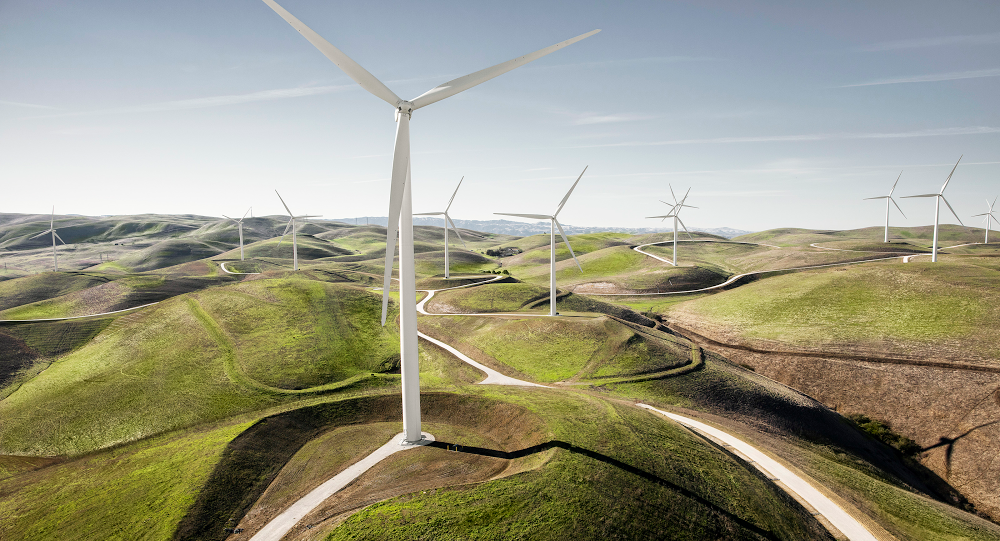
From Google blog by Sims Witherspoon & Will Fadrhonc
Carbon-free technologies like renewable energy help combat climate change, but many of them have not reached their full potential.
In search of a solution to this problem, last year, DeepMind and Google started applying machine learning algorithms to 700 megawatts of wind power capacity in the central United States.
Although we continue to refine our algorithm, our use of machine learning across our wind farms has produced positive results.
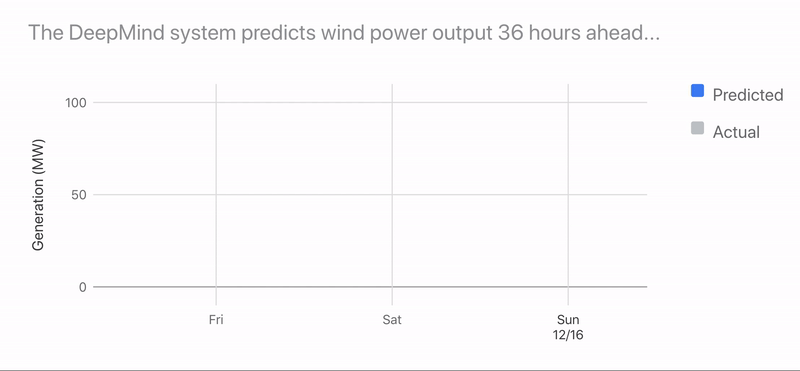
We can’t eliminate the variability of the wind, but our early results suggest that we can use machine learning to make wind power sufficiently more predictable and valuable.
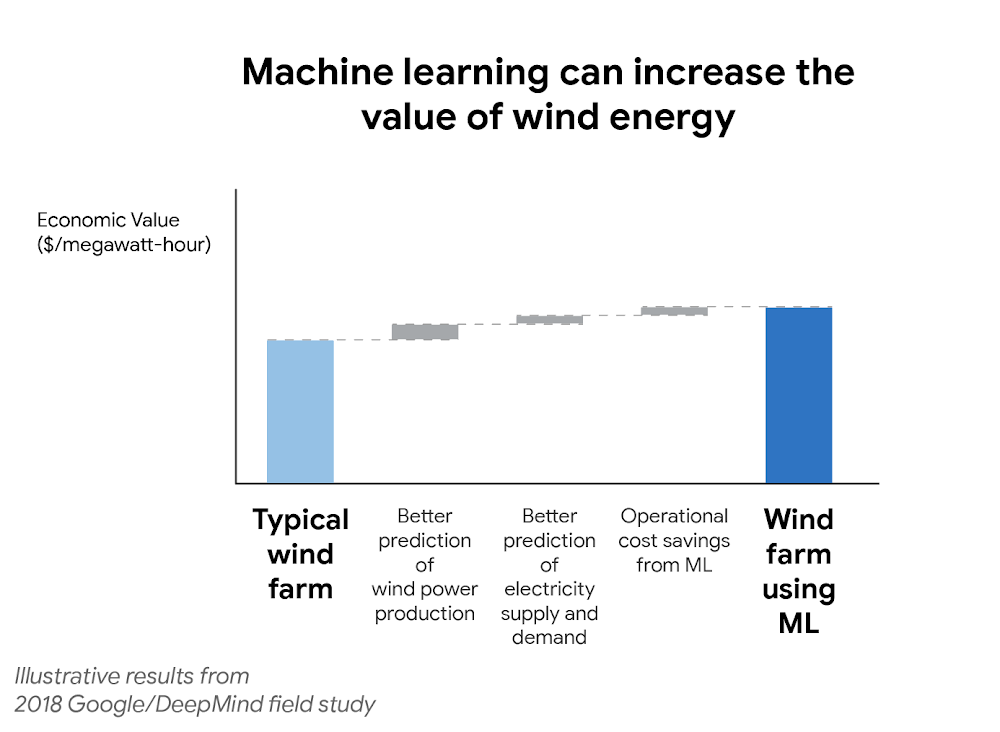
Our hope is that this kind of machine learning approach can strengthen the business case for wind power and drive further adoption of carbon-free energy on electric grids worldwide.
Google recently achieved 100 percent renewable energy purchasing and is now striving to source carbon-free energy on a 24x7 basis.
Wednesday, January 6, 2021
I chose fun over drudgery – and ran off to live at sea
From The Guardian by Susan Smillie
After a miserable 2014, I knew I had to make more time for myself – and my beloved boat
I don’t make resolutions.
But one year I made an exception.
It was 1 January 2015.
It was the only nod to self-improvement I have ever made – and it changed the course of my life.
Very seriously, I resolved to have more fun.
I had been inspired by the American folk legend Woody Guthrie, whose 1943 resolutions had come to light, a list full of such gems as “dream good” and “dance better”.
Yes, I thought.
Focus on what brings you joy – if that isn’t improvement, I don’t know what is.
(I would humbly suggest this is even more pertinent as the cruel joke that is 2020 comes to a close.)
I had had a tough year, having taken on a difficult project on top of a demanding full-time job and spent the months leading up to Christmas working so hard I barely slept.
When I did sleep, I dreamed of the ocean (unsurprisingly, given I was writing a book about sea nomads in my spare time).
The stupid thing, though, was that I hadn’t been in the sea – where I am happiest – once that summer.
I had my beloved little boat, Isean, in Brighton; my job was in London.
I would usually spend whatever free time I had there, swimming, fishing, floating around.
This year I hadn’t been to see her once.
Sunny weekends were spent indoors working; the summer passed without me really noticing it.
And I had been miserable.
Having more fun was, for me, always going to mean having more fun with Isean – but that required effort.
I sailed, but I wasn’t a confident sailor.
I would go out on calm days in Brighton, where there are few hazards and not much need for knowledge of navigation or tides.
I dreamed of sailing Isean properly – maybe crossing the Channel to France, an exciting but distant goal.
In the meantime, I dreamed of being confident enough to leave the marina overnight, to make passage plans, to go out to anchor in beautiful quiet bays – to really have fun with my boat.
Over the remainder of that winter, I kept to my resolution.
In January, as it froze outside, I sat in the warmth, having geeky fun with charts, practising navigation, measuring distances and tidal ranges, dreaming of where it could take me.
It took me west.
I remember so clearly the day my friend and I set off from Brighton.
It was mid-March 2015, cold, drizzly, misty.
I made the classic mistake of underestimating how long it would take, setting off late, sailing too slow.
By the time we reached Littlehampton, we were fighting against strong tides, wondering whether we would clear the sandbar to get into the harbour.
We did – just.
I will never forget my excitement and pride.
At a restaurant later, I wanted to tell everyone that I had sailed there, as if it had been an epic journey (it was a mere 15 nautical miles).
I carried on after that, couldn’t turn back, took Isean to the hardest place I could think of to learn: the Solent, with its mighty tides, strong winds, shifting sandbanks, ships, ferries, hovercrafts.
“So you want to go somewhere stressful to sail?” my friend asked.
It will be fun, I reasoned.
I didn’t turn back.
I kept going west, to Land’s End, Cornwall, then south.
I am writing from a desolate anchorage in Greece.
I quit my job and ran off to live at sea.
This morning, I was underwater, scraping barnacles from my hull, a school of curious sea bream following me.
It is not everyone’s idea of fun, but it is more than I ever thought possible.
Tuesday, January 5, 2021
First new seafloor map of 2021 collected on New Year’s expedition in Australian waters
From Hydro
Schmidt Ocean Institute’s research vessel Falkor has collected the first public seafloor data of the New Year, as part of a global effort to map the entire ocean floor by 2030.
The expedition is a collaboration between Schmidt Ocean Institute, Seabed 2030, and Australian research institutions, and seeks to map significant seafloor features in the Tasman and Coral seas, offshore Eastern Australia.
The complexity of the seafloor
"We are still learning a lot about the complexity of the seafloor and are always discovering new features," said co-chief scientist Dr Helen Bostock, from the University of Queensland.
Jamie McMichael-Phillips, Seabed 2030 project director said: “We now have just under a decade to reach our target of mapping the world’s entire ocean floor. Partnering with organizations such as Schmidt Ocean Institute will greatly help us in achieving this ambitious initiative, and this expedition is an excellent testament to how we intend to use this time we have left until 2030.”
The high-resolution seafloor mapping is a continuation of Schmidt Ocean Institute’s year-long 2020 campaign in Australia, which has resulted in new discoveries, including a 45-meter siphonophore, believed to be earth’s longest sea creature, and a new 500-meter tall detached coral reef.
Globally so far, 19 percent of the seafloor has been mapped according to the Seabed 2030 initiative. “Schmidt Ocean Institute is proud to partner with and fly the flag of Seabed 2030 to advance this critical work,” said executive director Dr Jyotika Virmani, “Open sharing of information is one of our core values, and seafloor maps are fundamental to understanding our ocean. Better seafloor maps will improve tsunami prediction and will also give scientists insight into ocean circulation which controls the marine environment, including where nutrients and pollutants such as microplastics accumulate.”
“It’s an honor for us at Schmidt Ocean Institute to collect the first seafloor mapping data of 2021 as we greet this UN Decade of Ocean Science,” said Wendy Schmidt, Schmidt Ocean Institute co-founder. “With the tools we have today, we are able to ‘see’ the deepest, darkest ocean floor. As we explore more areas, there’s no telling what discoveries await, but we fully expect to identify new areas of high biodiversity that need protection, and to help develop comprehensive ocean floor maps that can guide the world in sustainably developing the Blue economy.”
The expedition will continue mapping the Tasman and Coral seas through to 26 January.
Monday, January 4, 2021
2020’s top ocean news stories
From Mongabay
1. The ocean in a worldwide pandemic
As the year that challenged the world with a widespread pandemic draws to a close, COVID-19 has affected almost every aspect of life as we knew it.
Even the ocean, the most powerful force in the world, is not immune to its effects.
The amount of marine plastic pollution, 13 million tons of which was already entering the ocean each year, has certainly grown with the addition of improperly disposed personal protective equipment, such as single-use masks and gloves.
People are using an estimated 129 billion face masks and 65 billion gloves every month; one report predicts that 1.56 billion face masks could end up in the ocean this year.
State and city rollbacks on bans of plastic items like bags and utensils due to concern over spreading the virus via reusable options could contribute as well.
The influx of yet more plastic to the sea not only poses a threat to human health, but also heightens the risk of injury or death to some 600 wildlife species that may consume debris they mistake for food.
On a brighter note, the early days of the pandemic provided a rare opportunity to study a quieter underwater habitat resulting from reduced worldwide trade.
Researchers examined underwater sound in real-time near the port of Vancouver and found a consistent reduction in low-frequency sound attributed to ship traffic from January to April, when imports and exports dropped 20%.
This study and others are providing much-anticipated evidence about the effect noise pollution has on marine life.
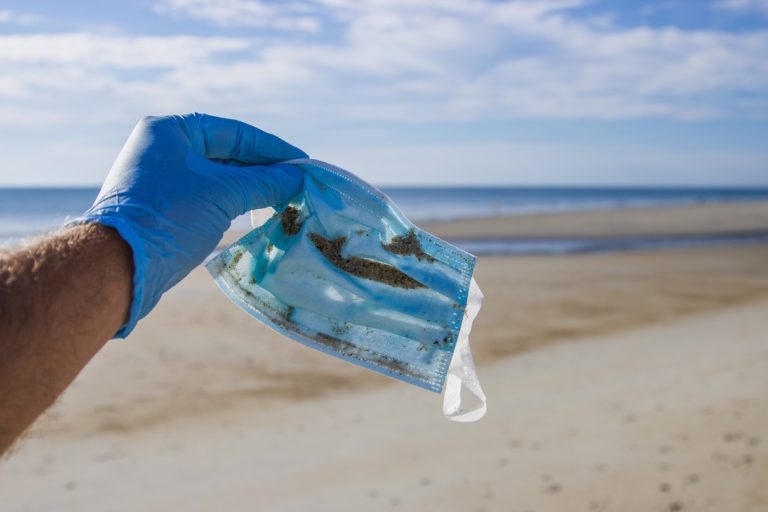 A Face mask found during a beach cleanup in Hampton Beach, New Hampshire.
A Face mask found during a beach cleanup in Hampton Beach, New Hampshire.Image by Brian Yurasits via Unsplash.
2. Ocean justice and diversity in marine science
What is “ocean justice”?
It is hard to miss this ocean warrior and scientist’s writing and voice, laying out how action against climate change is slowed by racism.
She also co-edited a book on climate composed entirely of female voices, released in 2020.
Johnson is joined by a community of Black marine scientists doing important research.
This year, multiple campaigns highlighted and celebrated Black representation in many areas of science.
One of them, #BlackInMarineScienceWeek, founded by environmental ecologist Tiara Moore,underscored a historically underrepresented group’s contributions to the field and inspired younger generations to pursue a career in marine science.
Diverse representation and the inclusion of gender, race and socioeconomics in the conversation about the impacts of climate change are critical: marginalized groups often bear a greater burden of effects like flooding and pollution, while groups with privilege and power often benefit more from conservation initiatives.
It is imperative for all members of the marine science field to help ensure the progress and recognition continues well beyond the week-long campaign.
 Climate justice banners outside Minneapolis City Hall in 2016.
Climate justice banners outside Minneapolis City Hall in 2016.3. The future of the blue ocean economy
The reach that COVID-19 has had in the ocean does not stop at health factors; the pandemic has also disrupted the “blue economy.” The ocean would be the world’s seventh-largest economy if it were a nation, with marine jobs, services and products valued at $2.5 trillion a year.
Border closures and diminished restaurant demand have drastically impacted the seafood industry, with fishing activity declines of up to 80% in China and West Africa.
The U.S., one of the top seafood exporters and importers, also experienced a 40% decline in catches, along with similar declines in imports and exports.
Ocean-based tourism is an important contributor to the GPD of many countries, with a global value of $390 billion before the pandemic.
Small island developing states that depend on ocean-based tourism for foreign exchange have been particularly vulnerable to the effects of halted travel, with a potential global impact on tourism amounting to a loss of $7.4 billion and risking 75 million jobs.
Looking into the post-COVID-19 future, there are opportunities for rebuilding a stronger and more sustainable ocean economy.
The panel invites other nations to join, aiming for 100% of the ocean under national jurisdictions to be managed sustainably as a new blue economy emerges by 2030.
Endangered North Atlantic right whales (Eubalaena glacialis) continued to make headlines as their dwindling numbers drew increasing concern from scientists.
In October, the U.S. National Oceanic and Atmospheric Administration (NOAA) released a new population estimate of just 366 individuals as of January 2019, an 11% decrease from the year before.
With only around 94 reproductive females, the species has struggled with reproduction while also experiencing high mortality from collisions with ships and entanglement in fishing gear.
New technologies aim to help address the collisions and entanglements.
Ropeless fishing traps made progress this year.
These stow the ropes used to haul up the traps on the seafloor until fishers release them with an acoustic signal.
The ropes currently extend from the trap to a buoy at the surface, and they entangle many whales.
A new “Right Whale Slow Zones” campaign launched along the U.S. East Coast, where the whales spend much of their time.
It provides vessel operators with information about where right whales have been detected.
New technology in southern California is also addressing ship collisions with endangered whales.
Our institution, the Benioff Ocean Initiative, launched an online tool called Whale Safe that draws on information from AI-powered ocean sensors, big data models and direct whale sightings, the first time the three data sources have been combined.
The tool integrates the data streams to detect endangered whales and disseminate whale-presence data to mariners in near real-time.

Image courtesy of the Port of Los Angeles.
5. Transparency in fishing
After the U.N. Security Council passed sanctions on North Korea in 2017, international fishing within North Korean waters became illegal.
A new study by Global Fishing Watch revealed that in 2017 and 2018 Chinese “dark fleets” illegally caught an estimated 160,000 tons of Pacific flying squid (Todarodes pacificus) worth $440 millionin North Korean waters.
The presence of hundreds of comparatively advanced Chinese vessels has pushed some North Korean fishers to make the dangerous journey in their wooden ships to fish illegally in Russian waters, often with deadly results.
In another bid for transparent fisheries, the Inter-American Tropical Tuna Commission (IATTC) has moved toward real-time electronic monitoring of fishing activities aboard vessels that operate in its jurisdiction in the eastern Pacific.
Tuna fisheries there, worth $5.1 billion in 2018, are subject to illegal fishing and overexploitation, and as a deterrent the IATTC requires fishing vessels to carry human monitors to record their activities.
 Electronic monitoring on board a tuna vessel in Australia.
Electronic monitoring on board a tuna vessel in Australia.Image courtesy of AUS Fisheries Management Authority and Archipelago Asia Pacific via the Fishnet.ai database.
Although a lot of science was done from home this year, some researchers were still able to get out in the field, and their discoveries made global headlines.
Using the Schmidt Ocean Institute’s underwater ROV SuBastian in the waters off western Australia, researchers discovered both the longest animal ever recorded, a 46-meter (150-foot) siphonophore, and a coral reef taller than the Empire State Building.
These discoveries, in an area as well known as the Great Barrier Reef, reveal how little we still know about the deep ocean.
Even when new species are discovered it can take years for scientists to describe and classify them, as was the case with a deep-sea comb jelly that NOAA discovered in 2015 but only formally described this year.
Deep-sea scientists are on a mission to change this, and recently announced plans for a decade-long research program called Challenger 150.
The deep sea, which officially begins 200 meters (656 feet) below the surface, may soon be opened up to more than just research.
Regulations to allow mining of the seafloor could be finalized in 2021.
 A 47-meter (154-foot) Apolemia siphonophore recently discovered in Ningaloo Canyons, Australia.
A 47-meter (154-foot) Apolemia siphonophore recently discovered in Ningaloo Canyons, Australia.Image courtesy of Schmidt Ocean Institute.
Marine protected areas (MPAs) play an essential role in ocean ecosystem health, and are a key target of U.N. Sustainable Development Goal 14.
Despite rapid growth in the designation of MPAs in the last decade, the international community fell disappointingly short of a pledge to protect 10% of the oceans by the end of 2020 under the Convention on Biological Diversity’s Aichi targets.
Current global MPA coverage, including those pledged but not yet implemented, amounts to 7.6%.
This year did still see big announcements of MPA commitments moving us closer to the goal.
The government of Tristan da Cunha, one of the most remote and pristine island archipelagos in the world, will create the biggest “no-take” zone in the Atlantic Ocean, protecting 90% of its waters from fishing and other extractive activities.
The islands support tens of millions of seabirds, including the endangered northern rockhopper penguin (Eudyptes moseleyi) and yellow-nosed albatross (Thalassarche chlororhynchos).
The Seychelles, a country that relies heavily on its ocean economy, announced plans to expand MPA coverage to 30% of its exclusive economic zone.
There were high hopes that 2020 would be the year the Commission for the Conservation of Antarctic Living Resources (CCAMLR) would designate new MPAs in the Southern Ocean, providing vital protection for species suffering the impacts of climate change and overfishing, such as the Antarctic krill (Euphausia superba) and Patagonian toothfish (Dissostichus eleginoides).
 A pair of albatrosses on Nightingale Island in the Tristan da Cunha archipelago.
A pair of albatrosses on Nightingale Island in the Tristan da Cunha archipelago.Human politics shape the future of our ocean.
In the case of the U.S., with the possible exception of the Save Our Seas Act to prevent marine debris, particularly plastics, and recent efforts to expand ocean exploration and mapping, it has been a very bleak few years for global ocean leadership from Washington, D.C.
The forthcoming change in administration sets the stage for regaining momentum to protect ocean health and promote the ocean economy, both domestically and abroad.
First and foremost, the U.S. needs to rejoin the Paris Agreement on day one of the Biden-Harris administration.
The health of the ocean is intrinsically linked to the state of the climate.
The new administration has a special opportunity to begin fulfilling its campaign promise to protect 30% of U.S. waters by 2030.
To do so it would need to bump up the extent of highly protected MPAs from the current 23%.
There will also be important decisions to make as to whether and how the country will play catch-up with marine industries that have become pillars of the blue economy in other regions but have barely taken hold in U.S. marine waters, such as aquaculture and ocean energy.
The new administration can and must double down on addressing environmental justice concerns affecting coastal communities and promote inclusion in ocean science and conservation.
A new U.S. president can do an immense amount for our global ocean by taking strong leadership positions for the sustainable management and protection of the high seas, Arctic and Antarctic.
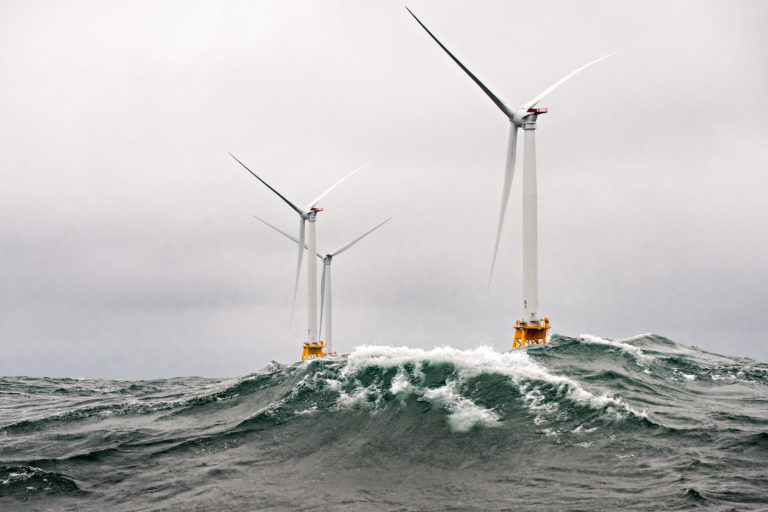
Image by Dennis Schroeder / NREL via Flickr (CC BY-NC-ND 2.0).
9. First modern-day marine fish goes extinct
Many believe that the oceans are happily behind the curve when it comes to extinction relative to the waves of extinction that appear to be starting on land and in freshwater ecosystems.
Fish, in particular, have been considered especially difficult to drive totally extinct.
In 1998 the barndoor skate (Dipturus laevis) was feared on track to become one of the planet’s first confirmed extinct marine fishes.
The skate, however, was found taking refuge in deeper waters than expected and the species made a spectacular comeback.
Unfortunately, 2020 appears to be the year in which the first modern–daymarine fish was officially declared extinct by the IUCN.
The smooth handfish (Sympterichthys unipennis), a species with the ability to “walk” on the seafloor using its pectoral fins, likely went extinct due to habitat loss and destructive fishing practices, and scientists are now worried about the fate of the remaining handfish species.
As the ocean becomes more industrialized and climate change advances, other marine species may go the way of the smooth handfish.
Furthermore, the true scope of species loss can be challenging to assess in a space as vast as the ocean, particularly when we are regularly discovering new marine species.

Its relative, the smooth handfish (Sympterichthys unipennis), likely went extinct this year.
Image by John Turnbull via Flickr (CC BY-NC-SA 2.0).
10. ‘Super year’ for the ocean, take two
2020 had been billed as the “Super Year for the Ocean.” Observers were anticipating international agreements to protect biodiversity on the high seas, regulate deep-sea mining, and draft a post-2020 Biodiversity Framework that would renew the expired Aichi targets.
However, as the world shut down for the pandemic, negotiators put treaty discussions on pause and postponed meetings until next year.
Those that did go ahead, such as CCAMLR and World Trade Organization negotiations to reform fisheries subsidies, gave disappointing results and look set to continue into 2021.
Even so, the end of the year has brought some promising developments for the ocean and the planet.
The U.K. joined the push for a global treaty to tackle plastic pollution.
China announced its goal to reach net-zero carbon emissions by 2060, and Japan and South Korea followed swiftly with pledges to reach net-zero by 2050.
The pressure is now on other major carbon emitters, such as the U.S., to set out their so-called nationally determined contributions and create achievable roadmaps to meet them.
With global ambition remaining high there is still the potential for real momentum for the ocean in 2021.
Further inspiration comes from the U.N. Decade of Ocean Sciencebeginning next year, with a once-in-a-lifetime opportunity to strengthen global ocean management with scientific knowledge.

Image by Greg McFall, Gray’s Reef NMS, NOS, NOAA via Flickr (CC BY 2.0).















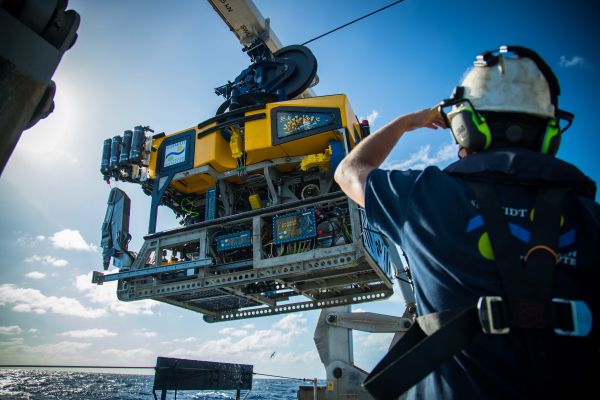


 A fish market in Catania, Italy.
A fish market in Catania, Italy.